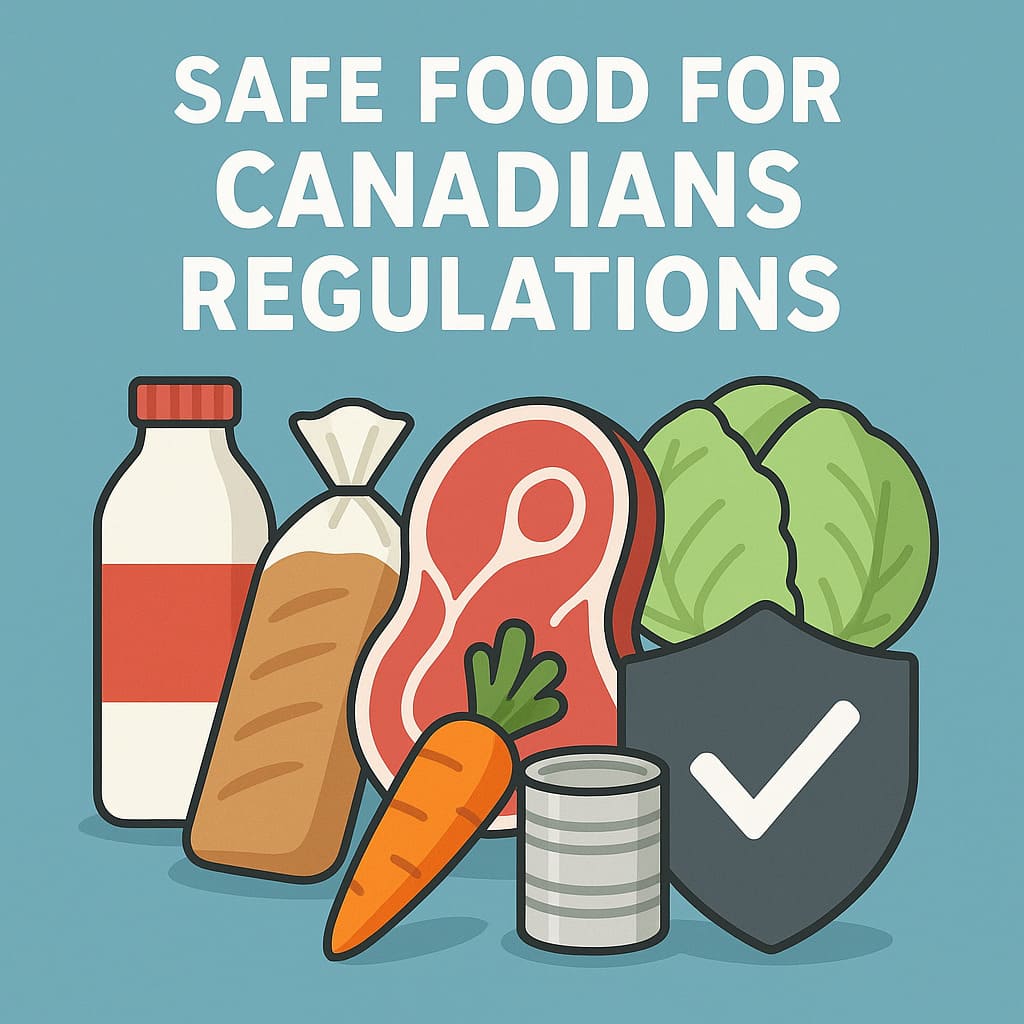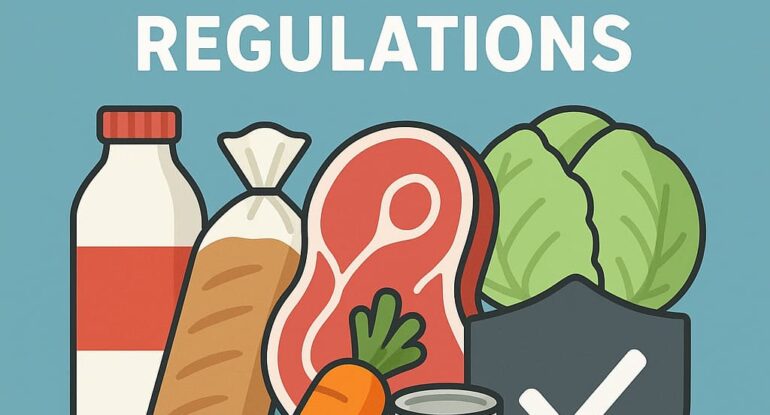Safe Food for Canadians Regulations: Complete SFCR Compliance Guide for 2024
Navigate SFCR requirements with confidence and ensure your food products meet Canadian import standards

Food businesses shipping to Canada face strict regulatory requirements. The Safe Food for Canadians Regulations (SFCR) govern how food products enter the Canadian market.
Understanding these regulations is crucial for success. Your business depends on compliance.
What Are Safe Food for Canadians Regulations?
The Safe Food for Canadians Regulations represent Canada’s comprehensive food safety framework. These regulations replaced multiple food safety acts in 2019.
SFCR applies to most food businesses. This includes importers, manufacturers, and distributors.
The Canadian Food Inspection Agency (CFIA) enforces these regulations. They ensure food safety across the entire supply chain.
Key Components of SFCR
The Safe Food for Canadians Act covers several critical areas:
Licensing Requirements
– Mandatory licenses for specific food businesses
– Annual renewal processes
– Compliance verification procedures
Traceability Standards
– Record-keeping obligations
– Product tracking systems
– Recall preparedness protocols
Food Safety Programs
– Hazard analysis requirements
– Preventive control measures
– Monitoring and verification procedures
ISF: Complete Guide to Importer Security Filing (10+2) Requirements
Who Needs SFCR Compliance?
Safe Food for Canadians Regulations affect various business types. Understanding your obligations is essential.
Businesses Required to Hold SFCR Licenses
Food Importers
Any business importing food into Canada needs licensing. This includes small and large operations.
Food Manufacturers
Manufacturing facilities producing regulated foods require licenses. Processing plants fall under this category.
Food Wholesalers
Wholesale operations distributing food products need compliance. Distribution centers must meet SFCR standards.
Exemptions and Special Cases
Some businesses have different requirements. Small-scale operations may qualify for exemptions.
Local farmers markets often have reduced obligations. Direct-to-consumer sales may have special provisions.
SFCR Licensing Process Explained
Obtaining your Safe Food for Canadians license requires careful preparation. The process involves multiple steps.
Application Requirements
Business Information
– Company registration details
– Facility locations and descriptions
– Food products and categories
Food Safety Programs
– Documented safety procedures
– Hazard analysis documentation
– Preventive control measures
Supporting Documentation
– Floor plans and facility layouts
– Equipment specifications
– Staff training records
Timeline and Fees
License processing typically takes 30-90 days. Complex applications may require additional time.
Application fees vary by business type. Annual renewal fees also apply.
Plan your application timeline carefully. Submit applications well before required compliance dates.
Traceability Requirements Under SFCR
Safe Food for Canadians Regulations mandate comprehensive traceability systems. These systems protect public health.
Record-Keeping Obligations
Incoming Products
– Supplier information
– Product specifications
– Receiving dates and quantities
Internal Processes
– Production records
– Quality control data
– Equipment maintenance logs
Outgoing Products
– Customer information
– Distribution records
– Shipping documentation
Data Retention Periods
Most records must be kept for two years. Some specialized products require longer retention.
Digital records are acceptable. Ensure backup systems protect critical data.
AMS and US ACE: Complete Guide to Automated Manifest System and Customs Environment
Food Safety Program Development

Every SFCR-regulated business needs a food safety program. This program forms the compliance foundation.
Hazard Analysis Requirements
Biological Hazards
– Pathogen identification
– Contamination prevention
– Sanitation procedures
Chemical Hazards
– Cleaning agent controls
– Pesticide residue monitoring
– Allergen management
Physical Hazards
– Foreign object prevention
– Equipment maintenance
– Facility design considerations
Preventive Controls Implementation
Preventive controls address identified hazards. These controls must be measurable and verifiable.
Critical control points require continuous monitoring. Corrective actions must be documented.
Regular verification ensures system effectiveness. Third-party audits may be beneficial.
Common SFCR Compliance Challenges
Businesses face various obstacles achieving Safe Food for Canadians Regulations compliance. Understanding these challenges helps preparation.
Documentation Complexity
SFCR requires extensive documentation. Many businesses struggle with paperwork requirements.
Start documentation early. Use templates and standardized forms when possible.
Consider professional assistance for complex operations. Consultants can streamline the process.
Training and Education Needs
Staff must understand SFCR requirements. Training programs ensure consistent compliance.
Develop comprehensive training materials. Include role-specific responsibilities and procedures.
Regular refresher training maintains compliance standards. Document all training activities.
AMS and US ACE: Complete Guide to Automated Manifest System and Customs Environment
Technology Solutions for SFCR Compliance
Modern technology simplifies Safe Food for Canadians Regulations compliance. Digital solutions offer significant advantages.
Traceability Software
Specialized software manages traceability requirements. These systems automate record-keeping processes.
Cloud-based solutions offer scalability. Mobile access enables real-time data entry.
Integration with existing systems reduces duplication. Choose software meeting CFIA requirements.
Quality Management Systems
Comprehensive quality systems support SFCR compliance. These platforms manage multiple compliance aspects.
Document control features ensure version accuracy. Workflow automation improves consistency.
Reporting capabilities support regulatory submissions. Analytics identify improvement opportunities.
SFCR Enforcement and Penalties
The Canadian Food Inspection Agency actively enforces Safe Food for Canadians Regulations. Non-compliance carries serious consequences.
Inspection Procedures
CFIA conducts regular facility inspections. These inspections verify ongoing compliance.
Inspectors review documentation and procedures. They may collect samples for testing.
Cooperation during inspections is essential. Prepare staff for inspection processes.
Penalty Structure
Violations can result in significant penalties. Administrative monetary penalties range from hundreds to thousands of dollars.
Serious violations may lead to prosecution. Criminal penalties include fines and imprisonment.
License suspension or revocation affects business operations. Maintain compliance to avoid penalties.
Staying Current with SFCR Updates
Safe Food for Canadians Regulations continue evolving. Staying informed ensures ongoing compliance.
Official Information Sources
The CFIA website provides current information. Subscribe to updates and newsletters.
Industry associations offer compliance resources. Professional networks share best practices.
Legal counsel provides specialized guidance. Consider retainer arrangements for complex situations.
Continuous Improvement Practices
Regular compliance audits identify improvement opportunities. Internal audits supplement external reviews.
Industry benchmarking reveals best practices. Learn from successful compliance programs.
Staff feedback improves system effectiveness. Encourage continuous improvement suggestions.
Conclusion
Safe Food for Canadians Regulations create a comprehensive framework for food safety. Compliance protects public health while enabling business success.
Understanding SFCR requirements is the first step. Proper planning and implementation ensure ongoing compliance.
Professional guidance can simplify the process. Invest in proper systems and training for long-term success.
Start your SFCR compliance journey today. Your business and customers depend on it.
The regulations may seem complex initially. With proper preparation and commitment, compliance becomes manageable.
Take action now to protect your business future.



